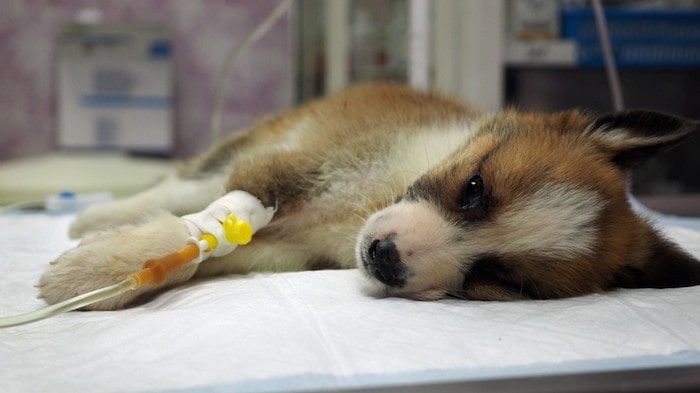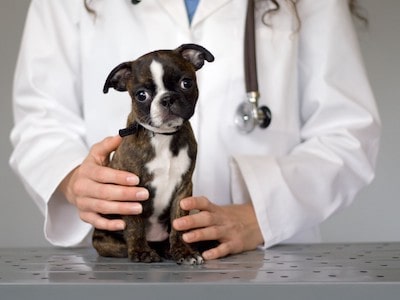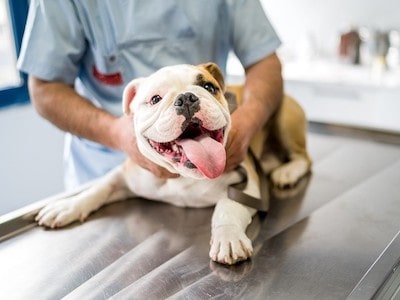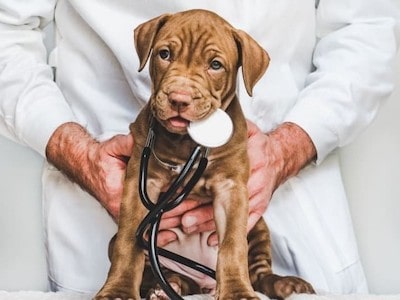If you are a dog owner or lover, you may have heard of parvo, a deadly virus that can infect dogs of any age, but especially puppies and unvaccinated dogs. Parvo is highly contagious and can cause severe symptoms such as lethargy, vomiting, fever, diarrhea, and dehydration.
Parvo can be fatal if left untreated, so it is very important to vaccinate your dog and seek veterinary care as soon as possible if you suspect parvo infection. In this article, we will explain what parvo is, how it is spread, how it is diagnosed, how it is treated, and how it can be prevented.
What Is Parvo in Dogs?
“Parvo is an infectious DNA virus that commonly causes severe illness in young and unvaccinated dogs. It primarily affects the body’s rapidly dividing cells, meaning the intestinal tract and bone marrow are the most affected” says, Ellen Malmanger, DVM from PetMD
Parvo is short for canine parvovirus (CPV), a type of virus that belongs to the parvoviridae family. There are two main strains of CPV that affect dogs: CPV-2a and CPV-2b. Both strains can cause the same symptoms and complications, but CPV-2b is more prevalent and virulent[1].
Parvo infects the body’s rapidly dividing cells, such as those in the intestinal lining and bone marrow. This leads to damage and destruction of these cells, resulting in inflammation, bleeding, and infection. Parvo can also affect the heart muscle cells of very young puppies, causing a condition called myocarditis[2], which can lead to heart failure.

Parvo is spread by direct or indirect contact with infected feces (stool). The virus can be shed in large quantities by infected dogs for several days or weeks after they show symptoms.
The virus can also survive in the environment for months or years, and can be found on the ground, in kennels, on peoples’ hands, on objects, or on the clothing of those who have been contaminated. Dogs can also carry it on their fur or paws if they’ve come in contact with infected material.
Parvo is most common in puppies and adolescent dogs, especially those that are unvaccinated or have not completed their vaccination series. However, adult or senior dogs can also get parvo if they are unvaccinated or have a weak immune system.
Some breeds of dogs are more susceptible to parvo than others, such as Rottweilers, Doberman Pinschers, Labrador Retrievers, American Staffordshire Terriers, and German Shepherds.
How Is Parvo Diagnosed in Dogs?
The symptoms of parvo usually appear within 3 to 10 days after exposure to the virus. The first sign of parvo is often lethargy, meaning your dog may seem tired, weak, or depressed. They may also lose their appetite and weight.
As the virus progresses, your dog will start to suffer from abdominal pain, vomiting, and diarrhea, which may be severe and bloody. These symptoms can lead to dehydration, which can upset the electrolyte balance and affect the vital organs.
Your dog may also develop a fever, a low white blood cell count (which weakens the immune system), anemia (low red blood cell count), and endotoxemia (toxins in the blood). Very sick dogs may collapse and have a high heart rate, difficulty breathing, and hypothermia (low body temperature).

If you notice any of these signs in your dog, you should take them to the vet immediately. Parvo can be diagnosed by testing a fecal sample for the presence of the virus using either an ELISA[3] (enzyme-linked immunosorbent assay) or a hemagglutination test.
These tests are quick and easy to perform in most veterinary clinics. However, they are not 100% accurate and may give false negative results if the sample is taken too early or too late in the course of the infection.
Therefore, your vet may also perform other tests to confirm the diagnosis, such as blood tests or PCR (polymerase chain reaction), which can detect the virus’s DNA in the blood or feces.
Diagnosing parvo can be challenging because the symptoms can vary from dog to dog and can mimic other diseases that affect the gastrointestinal tract or the immune system. For example, parvo can be confused with coronavirus, salmonella, giardia, or intestinal parasites.
Parvo can also be complicated by secondary infections, such as bacterial or fungal infections, that can worsen the condition and the prognosis. Therefore, it is important to consult your vet as soon as possible and follow their recommendations for testing and treatment.
How Is Parvo Treated in Dogs?
Unfortunately, there is no specific treatment for parvo that can kill the virus or cure the infection. The current standard of care for parvo is supportive care, which means providing your dog with the necessary fluids, medications, and nutrients to help them fight the infection and recover. Supportive care often involves hospitalization in a veterinary clinic, where your dog can receive constant monitoring and care.
Malcolm Weir, DVM, VCA Hospitals suggests, “The first step in treatment is to correct dehydration and electrolyte imbalances”
The main components of supportive care for parvo are:
- Fluid therapy: This involves giving your dog intravenous (IV) fluids to replace the fluids and electrolytes lost through vomiting and diarrhea. Fluid therapy can also help prevent or treat dehydration, shock, and organ failure.
- Antibiotics: These are given to prevent or treat secondary bacterial infections that can occur due to the damage to the intestinal lining and the low white blood cell count. Antibiotics can also help reduce inflammation and endotoxemia.

- Antiemetics: These are drugs that help control vomiting and nausea, which can improve your dog’s appetite and hydration status. Antiemetics can also reduce the risk of aspiration pneumonia, which can occur if your dog inhales vomit into their lungs.
- Painkillers: These are drugs that help relieve pain and discomfort caused by abdominal cramps, inflammation, or ulceration. Painkillers can also improve your dog’s quality of life and well-being.
- Nutritional support: This involves providing your dog with a bland, easily digestible diet that can help restore their intestinal function and health. Nutritional support can also include supplements such as probiotics, vitamins, or minerals that can boost your dog’s immune system and recovery.
Supportive care for parvo can be very effective if started early and continued until your dog is fully recovered. Supportive care can reduce the mortality rate of parvo from 91% in untreated cases to 10% or less in treated cases. However, supportive care can also be very expensive, time-consuming, and stressful for both you and your dog. Therefore, it is better to prevent parvo than to treat it.
How Can Parvo Be Prevented in Dogs?
The best way to prevent parvo in dogs is to vaccinate them against the virus. Vaccination is a safe and effective way to protect your dog from getting infected or spreading the infection to other dogs. Vaccination works by stimulating your dog’s immune system to produce antibodies that can fight off the virus if they encounter it in the future.
The parvo vaccine is considered a core vaccine for puppies and dogs, meaning it is recommended for all dogs regardless of their lifestyle or risk factors. The vaccination schedule and protocol for puppies and adult dogs are as follows:
- Puppies: Puppies should receive their first parvo vaccine at 6 to 8 weeks of age, followed by booster shots every 3 to 4 weeks until they are 16 to 20 weeks old. Puppies should also receive a booster shot at one year of age.
- Adult dogs: Adult dogs should receive a booster shot every 1 to 3 years depending on their vet’s recommendation and the type of vaccine used.

Vaccination is not only important for your own dog’s health, but also for the health of other dogs in your community. By vaccinating your dog, you are contributing to herd immunity, which means reducing the chances of the virus spreading and infecting other dogs that may not be vaccinated or immune.
In addition to vaccination, you can also reduce the risk of exposure to parvo by avoiding contact with infected dogs or environments. Here are some tips on how to do that:
- Keep your puppy at home until they have completed their vaccination series and have developed immunity.
- Avoid taking your dog to places where there may be infected dogs or feces, such as parks, kennels, shelters, pet stores, or grooming salons.
- Do not let your dog interact with unknown or unvaccinated dogs or share food, water, toys, or bedding with them.
- Clean up after your dog when they defecate and dispose of their feces properly.
- Disinfect any areas or objects that may have been contaminated by infected feces using bleach or specialized cleaners that can kill the virus.
- Wash your hands thoroughly after handling any dog or feces and before touching your own dog.
- If you suspect that your dog has been exposed to parvo or has symptoms of parvo, isolate them from other dogs and contact your vet immediately.
Tips for Caring for a Dog with Parvo
If your dog has been diagnosed with parvo, you should follow your veterinarian’s instructions carefully and monitor your dog’s condition closely. Here are some tips for caring for a dog with parvo:
- Keep your dog isolated from other dogs and animals to prevent spreading the infection.
- Provide your dog with clean water and food as directed by your veterinarian.
- Keep your dog warm and comfortable.
- Clean up any vomit or diarrhea promptly and dispose of it safely.
- Wash your hands thoroughly after handling your dog or their waste.
- Disinfect any items or surfaces that your dog may have touched with diluted bleach or a specialized cleaner.
- Contact your veterinarian immediately if you notice any signs of worsening or complications.
FAQs
Can humans get parvo from dogs?
No, humans cannot get parvo from dogs. Parvovirus is species-specific, meaning that each species has its own version of the virus. Humans have their own strain of parvovirus that causes a mild illness called fifth disease. However, humans can still carry the virus on their hands, clothes, or shoes and transmit it to other dogs.
Can cats get parvo from dogs?
Yes, cats can get parvo from dogs. Cats are susceptible to a different strain of parvovirus called feline panleukopenia virus (FPV), which causes similar symptoms as canine parvovirus. Cats can catch FPV from contact with infected cats or contaminated feces, environments, or people. Cats can also catch CPV from dogs, but this is less common.
How long does parvo last in dogs?
The duration of parvo in dogs depends on several factors, such as the severity of the infection, the age and health of the dog, and the quality of the supportive care. Some dogs may recover within a week, while others may need longer hospitalization. Even after recovery, dogs may still shed the virus in their feces for up to 6 weeks, so they should be kept away from other dogs and animals during this period.
How long does parvo last in the environment?
Parvo can last in the environment for months or even years, depending on the temperature, humidity, and exposure to sunlight. Parvo is more likely to survive in cool, moist, and shady areas than in hot, dry, and sunny areas. Parvo is also more likely to survive on porous surfaces such as soil, grass, or carpet than on non-porous surfaces such as metal, plastic, or glass. Parvo can be killed by diluted bleach or some specialized cleaners.
Well, That’s a Wrap
Parvo is a serious and potentially fatal viral infection that affects dogs, especially puppies and unvaccinated dogs. It causes severe diarrhea and vomiting, dehydration, electrolyte imbalance, and immune system suppression. It can also damage the heart muscle of very young puppies.
Parvo is highly contagious and can be spread by contact with infected feces or contaminated surfaces, objects, or people. Parvo can be prevented by vaccinating your dog against it and avoiding exposure to other dogs or environments that may be infected.
Parvo can be treated with supportive care that involves hospitalization, fluid therapy, medication, and nutritional support. The survival rate depends on how quickly the diagnosis is made, the age and health of the dog, and how aggressive the supportive care is.
If you suspect your dog has parvo, you should take them to a veterinarian as soon as possible for diagnosis and treatment. You should also follow your veterinarian’s instructions carefully and monitor your dog’s condition closely. You should also keep your dog isolated from other dogs and animals until they are fully recovered and no longer shedding the virus.
Parvo is a serious threat to canine health, but it can be prevented and treated with proper care and attention. By vaccinating your dog against parvo and keeping them away from potential sources of infection, you can protect them from this deadly disease.
Reference:
- Quispe, R. Q., E, L. L., Beltrán, R. R., A, R. R., & Maturrano, L. (2018). Canine parvovirus types 2a and 2c detection from dogs with suspected parvoviral enteritis in Peru. NIH
- Janus, I., Noszczyk-Nowak, A., Nowak, M., Cepiel, A., Ciaputa, R., Pasławska, U., Dziegiel, P., & Jablonska, K. (2014). Myocarditis in dogs: etiology, clinical and histopathological features (11 cases: 2007–2013). Irish Veterinary Journal, 67(1). BMC
- Rimmelzwaan, G. F., Juntti, N., Klingeborn, B., Groen, J., Uytdehaag, F. G. C. M., & Osterhaus, A. D. M. E. (1990). Evaluation of enzyme‐linked immunosorbent assays based on monoclonal antibodies for the serology and antigen detection in canine parvovirus infections. Veterinary Quarterly, 12(1), 14–20. PubMed

Robert is the heart of Dog Needs Best, with his cheerful personality he is not only beloved by our team but also by dogs. He owns multiple dogs and knows ins and outs of them. Finding the perfect product is what he is best at!

